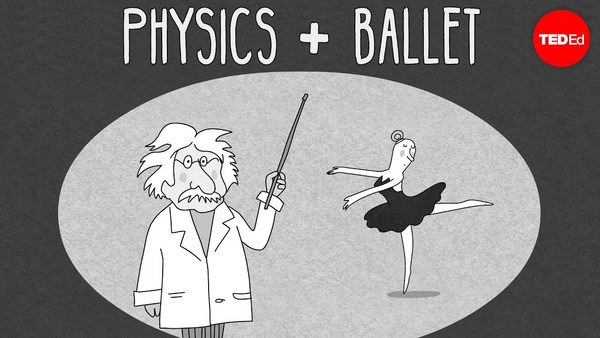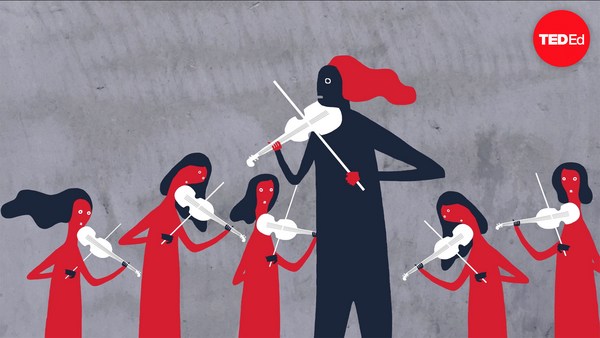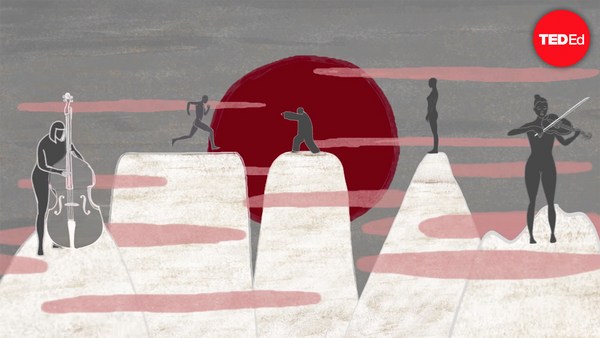A baby cursed at birth. A fierce battle of good and evil. A true love awoken with a kiss. Sleeping Beauty is one of the world’s favorite folktales. But one of its most famous renditions tells the story without a single word. Since premiering in 1890, "The Sleeping Beauty" has become one of the most frequently staged ballets in history. So what makes this piece so beloved? And what exactly does ballet bring to this— or any other story?
At the heart of ballet are dozens of gestures that dancers painstakingly perfect over thousands of hours of practice. This unique set of gestures has been used for centuries, each movement rich with meaning and history. But you don’t need to study them to understand ballet, any more than you need to study music to be moved by a song. And just as composers combine notes and phrases to form pieces of music, choreographers string these gestures together with new movements to form expressive combinations. Working alongside the orchestra’s live score, ballerinas precisely perform these combinations to convey narrative, emotion, and character.
In "The Sleeping Beauty’s" opening scene, a flurry of techniques depicts the fairy court bestowing gifts on baby Princess Aurora. The Fairy of Generosity delicately walks “en pointe”— meaning on the tips of her toes— in step with the light plucking of violins. The ballerina moves in perfect harmony with the music, even mimicing the violins’ trill with an elegant bourrée. The Fairy of Temperance, bestowing the gift of strong will on Aurora, is choreographed as if shooting bolts of electricity from her fingers. She bounds across the stage, spinning with quick chaînés before decisively jetéing. Some movements are even more literal than this. The evil fairy Carabosse curses the princess with a lethal “X,” and the benevolent Lilac Fairy counters that curse.
Of course, the relationship between music and movement isn’t always this straightforward. While classical ballet gestures often respond to musical elements, the degree to which the dancers and orchestra align is another choreographic tool. Some characters and scenes move in sync to create rhythmic clarity, while others deliberately diverge from the orchestra. Dancers and musicians maintain this delicate balance throughout each performance, engaging in a live negotiation of speed and rhythm.
But prior to the performance, a ballet’s most important relationship is between the choreographer and the music. Choreographer Marius Petipa and composer Piotr Ilyich Tchaikovsky worked together on every second of "The Sleeping Beauty." This is particularly noticeable in Princess Aurora’s exuberant entrance on her 16th birthday. Tchaikovsky’s enthusiastic music tumbles forward in fits and starts, even cutting short some musical phrases to capture her impatience. Petipa choreographs Aurora bouncing back and forth with “pas de chat”— French for "cat steps"— as she waits for her party to begin.
Once the celebration starts, it’s up to the dancers to deliver on the physical spectacle of performing these gestures with grace. Aurora has the hardest part of all: her famous Rose Adagio. As four suitors vie for her hand, the Princess performs a dizzying array of balances, all en pointe. She briefly takes each suitor’s hand, but then balances unassisted— a breath-taking display of physical strength and skill.
However, it’s not just technique that carries meaning, but also style and personality. Like an actor delivering their lines, ballerinas can execute their movements to convey a wide range of emotion. Aurora can be elegant and restrained, throwing her arms in independence from her suitors. Or she can be coy and flirtatious, descending from en pointe with grace and knowing confidence.
"The Sleeping Beauty" offers a showcase for so much of what ballet can do. Its graceful spectacle, dramatic physical vocabulary, and enchanting coordination of music and movement perfectly reflect the themes of this fantastical romance. But ballet isn’t just for epic fairytales. Ballets can be non-narrative emotional journeys, experimental deconstructions of form, or pure demonstrations of skill. The artform is always experimenting with a centuries old set of rules, making it the perfect medium for stories old and new.


